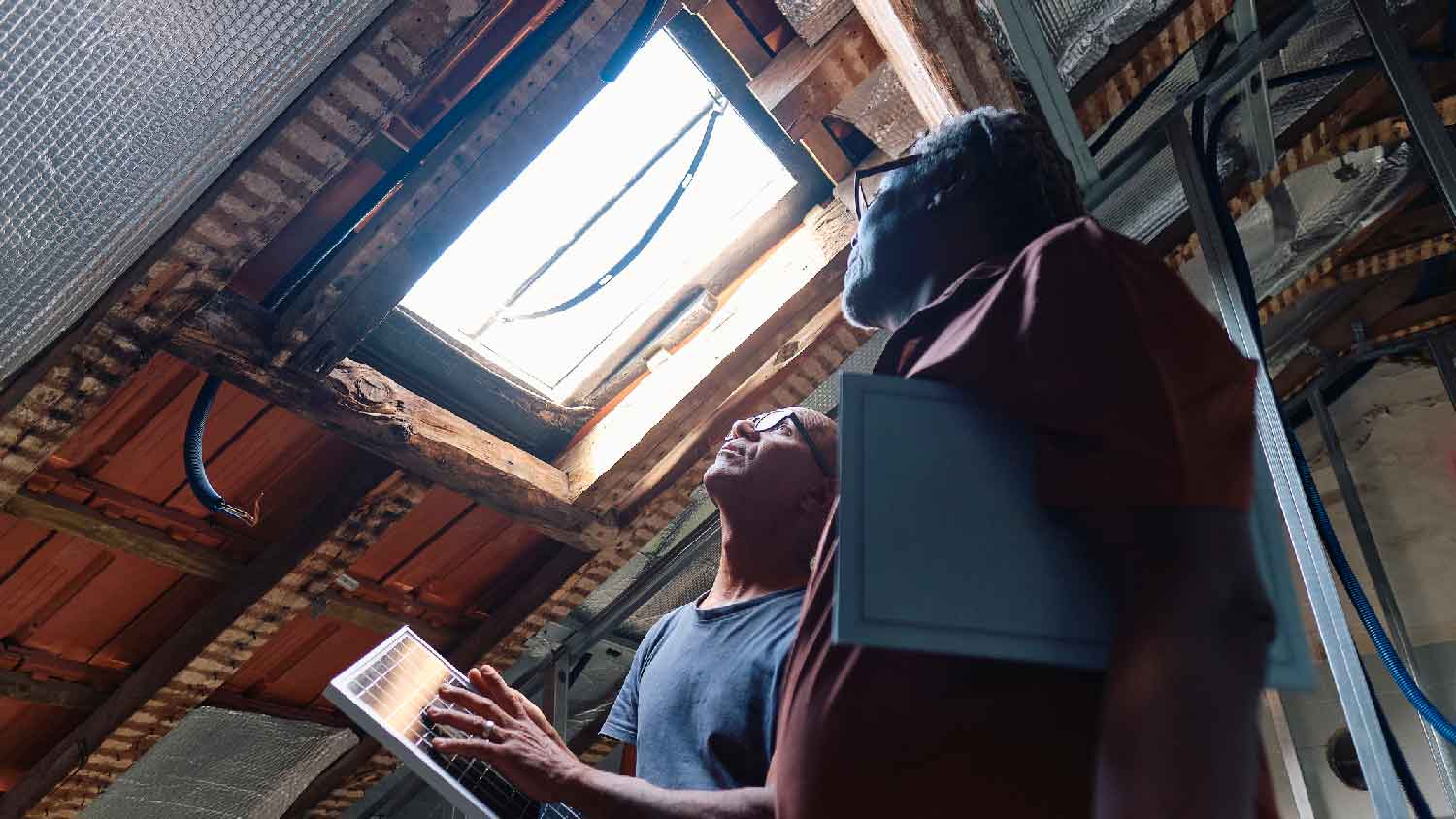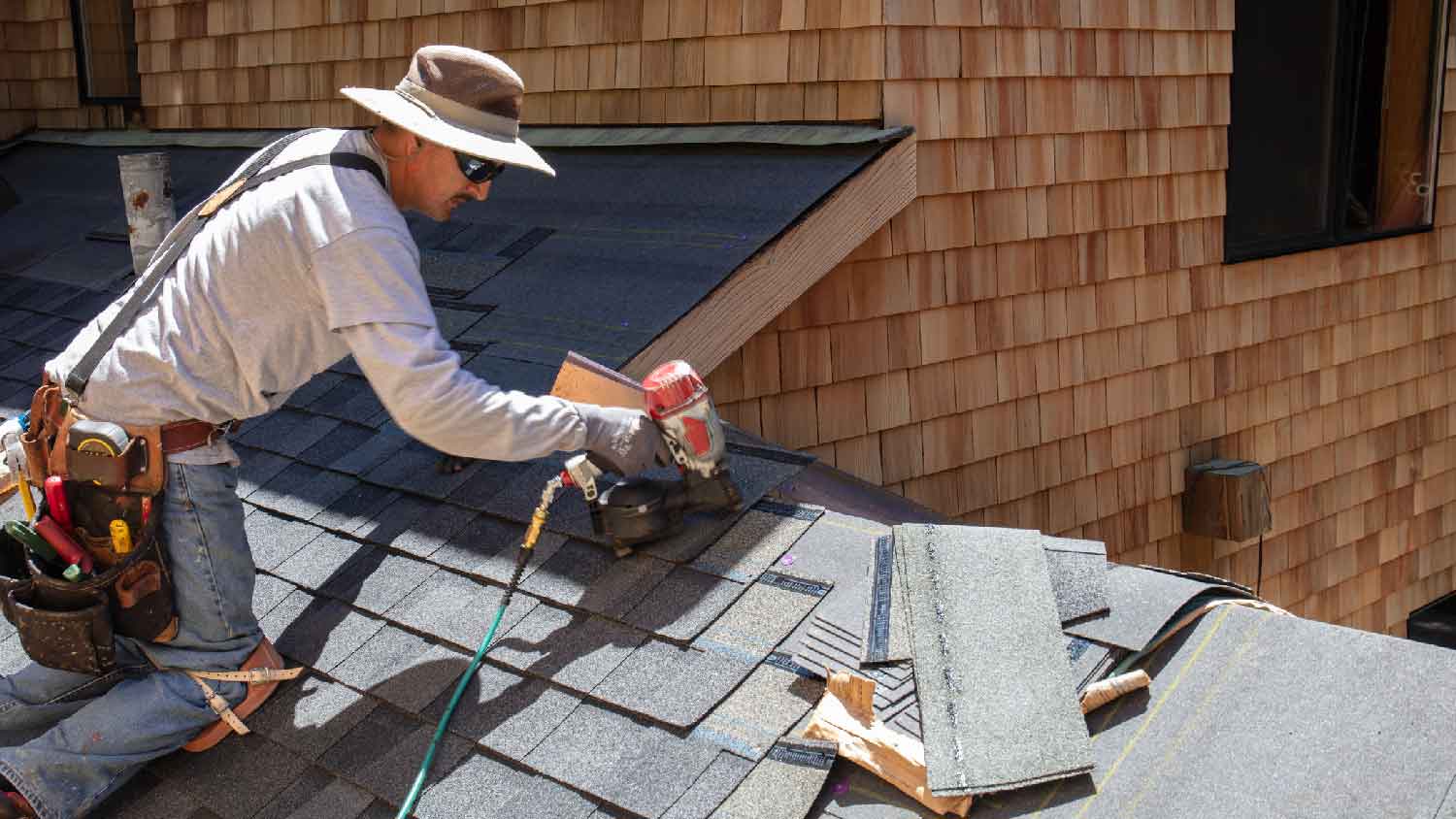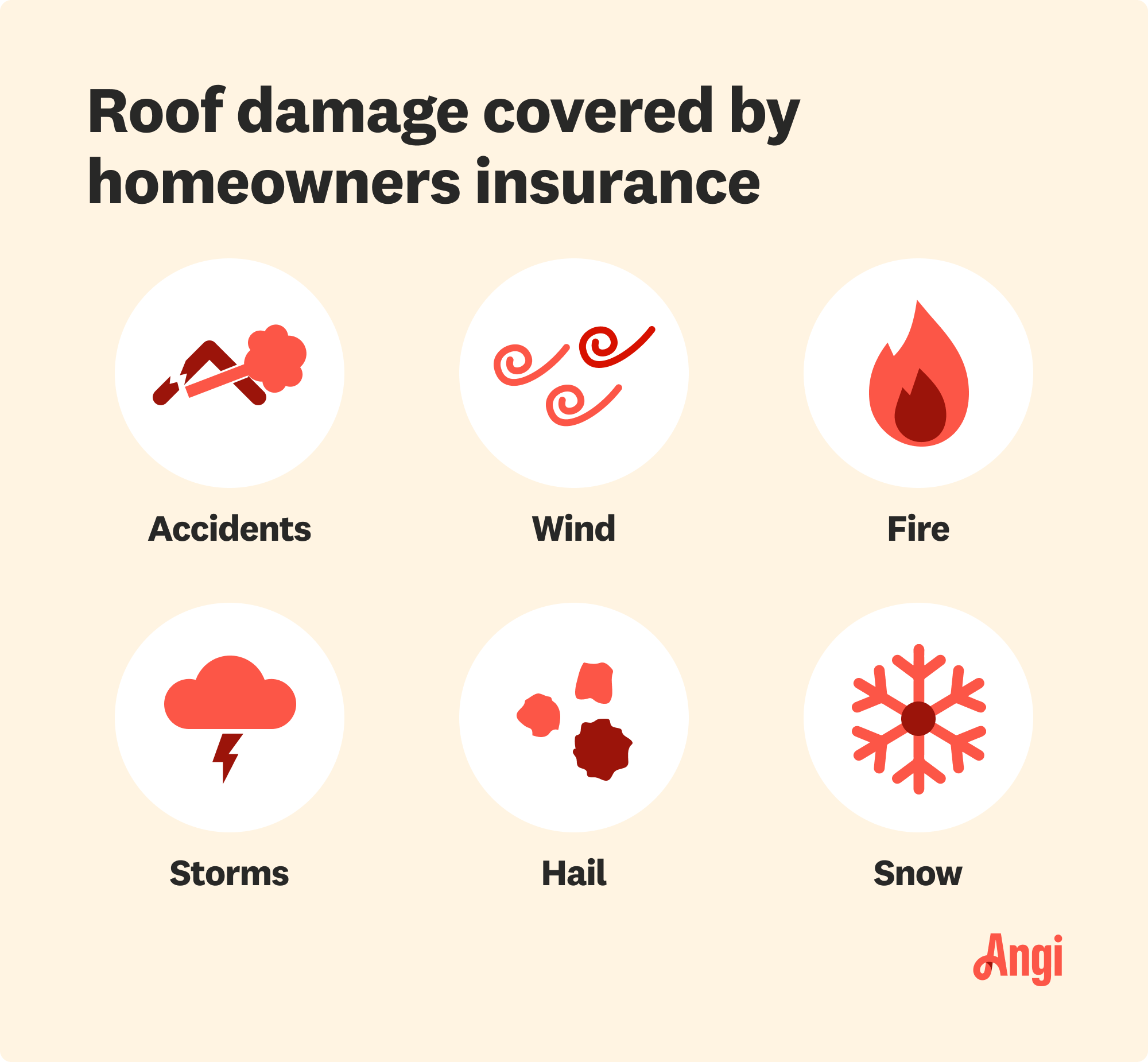How to Patch a Roof: 8 Potential Fixes for Small Holes
Seal the deal with a patch


Patching a roof is best for minor damage, such as small holes or cracks.
Large roof damage from a storm or fallen limbs can be patched with a tarp or plastic in the short term.
It can be risky to work on a roof, even if the patch job is minor.
Roof damage can cause a major headache for homeowners, making the inside and outside of your home vulnerable to further problems. Luckily, you can learn how to patch a roof with small holes or minor damage to avoid costly damages or repairs. Explore some of the best solutions to fixing your roof damage in the short term.
When Can I DIY Patching a Roof?
Patching a roof can be a good solution if you have small holes or need a temporary fix until a local roof repair company can come to your home. A patch job prevents further damage from water, pests, and other issues causing a larger problem. The roof repair cost for patching a hole ranges between $100 to $1,000, but you can save some money with DIY.
If you have large or multiple holes in the roof, a temporary fix will only suffice as you wait for a pro and shouldn't be relied on in the long term.
Signs You Need to Patch a Roof

If you suspect you have a small hole in your roof, there are some signs to watch for both inside and outside your home.
Water stains on the ceiling or walls: Brownish stains or discoloration could mean water is seeping in.
Dripping water or moisture: You may notice small leaks, especially after rain.
Mold or mildew growth: Excess moisture from a roof leak can cause mold to grow on walls, ceilings, or insulation.
Sunlight coming through the attic: If you can see small beams of light coming through your roof, there's likely a hole.
Unexplained musty smells: Persistent damp or musty odors can indicate hidden moisture from a leak.
Puddles or damp spots in the attic: If you notice moisture in your attic after a storm, your roof could have a hole.
Missing or damaged shingles: Cracked, curled, or missing shingles make it easier for water to get in.
Debris or rotting on the roof: Patches of rot, moss, or debris buildup could point to trapped moisture.
Damaged flashing: If the metal flashing around chimneys, vents, or skylights is cracked or loose, water can sneak in.
Sagging roof sections: Even small holes can weaken the roof structure over time.
Icicles or ice dams in winter: Ice buildup along the roof edge can push water under shingles, worsening small leaks.
A roof leak near electrical wiring is a serious safety concern because water can come into contact with exposed wires, potentially causing electrical short circuits, sparking, and fire hazards. If you suspect a leak near wiring, immediately turn off the power to the area and call a roofer and an electrician to handle the issue.
How to Patch a Roof
You can try a few different solutions to cover holes. How you patch your roof depends on the issue you're facing and could dictate which route you choose.
1. Use Caulk
Caulk can help seal very small holes or cracks, particularly around vents, roof flashing, or nail punctures. Apply roofing caulk to damaged areas and smooth it with a putty knife to create a watertight seal. While this can resolve minor issues, caulk won't provide long-term protection or be suited for larger holes or areas with significant shingle damage.
2. Use Liquid Flashing
Liquid flashing can be a better alternative to caulking and is a good option for flat or low-slope roofs that need a waterproof barrier. It's not recommended to use liquid flashing on steep-sloped roofs or where water pools heavily because it can wear down over time. The material can be applied with a brush or roller over damaged areas.
3. Use a DIY Patching Kit
DIY patching kits are an easy, all-in-one solution to fixing minor roof damage. Each kit comes with detailed instructions on how to apply the patch over the hole and use an adhesive membrane or sealant.
4. Use Roofing Tape
Roofing tape is a quick, temporary fix for minor leaks but is best suited for use during dry weather. The tape can wear off in heavy rain or snowfall or if applied to heavily damaged areas. To use, you'll cut and apply the roofing tape over small cracks and press firmly for strong adhesion.
5. Use Shingles

If you have replacement shingles for your roof, you can use these for temporary coverage. If you don't have any matching shingles, you can DIY some in the interim by cutting pieces of metal or plastic shingles to size and nailing them over the missing spots.
6. Use Roofing Cement
Roofing cement does a solid job of filling gaps in flashing, sealing around vents, or helping to secure loose shingles. Spread the roofing cement over the damaged area and consider embedding a patch to add strength. It's worth noting that roofing cement alone won't reinforce structural integrity, especially for large damaged areas.
7. Use a Plastic Sheet
If you need a quick, short-term solution to stopping leaks before you have time for a permanent repair, a plastic sheet will suffice. This solution isn't recommended for the long term as it's not durable and could tear in harsh weather conditions. Cut a heavy-duty plastic sheet to cover the damaged area and secure it with nails or roofing tape.
8. Use a Tarp
Tarps are a better solution for short-term, emergency protection over plastic. Avoid leaving the tarp on too long because it can degrade and trap moisture. Choose a waterproof tarp and drape it over the damaged section, securing it tightly with nails or boards.
If you don't feel comfortable tarping your roof, you can hire a pro. The cost to tarp a roof averages $450 but depends on the size of the damaged area.

Taking Care of a Patches on a Roof
When patching a roof, stay on top of how it's holding up, especially when using strictly short-term solutions. Inspect the area for signs of wear, such as cracks, peeling edges, or water seepage. Keep the area clean by removing debris, moss, dirt, or other buildup. Indoors, inspect the area close to the patch job when possible to ensure it's holding up well and not causing further damage.
If you've chosen a short-term solution like a tarp or plastic sheeting, stay on top of getting a pro out to fix the issue before it becomes a larger problem.
DIY vs. Hiring a Pro
Patching a roof as a DIY project is doable for the average homeowner to handle. However, the job requires using a ladder and working from a high point, which could pose risks. If you feel comfortable working on a roof and confident in your DIY abilities, going the DIY route can work for small issues. It's advised to use some assistance rather than tackle it on your own, especially if you need to place a tarp or plastic sheet on a damaged area.
While you can temporarily patch holes on your own, you'll need to hire a roof repair professional for a long-term solution. The roofing pros are best suited to handle larger damaged areas.
Frequently Asked Questions
The lifespan of a roof patch depends on which materials you use and the severity of the damage. Temporary solutions like tarps or plastic sheets last a few weeks to a few months, while roofing tape or caulk may hold up for a year or two. Permanent patches using roofing cement, flashing, or replacement shingles can last several years as long as they're properly maintained. Regular inspections and touch-ups can extend the patch’s lifespan, but eventually, a full repair or replacement would be needed.
Fall is considered the best time of year to fix a roof because temperatures are moderate, and the weather is drier, making repairs safer. Summer can also be a good option, but extreme heat can make shingles too soft and difficult to work with. Spring is a popular time for repairs following damage from winter storms, but frequent rainfall can slow down progress.





- Roofers
- Metal Roofing
- Roof Repair
- Roof Inspection
- Vinyl Siding Repair Contractors
- Flat Roofing Companies
- Commercial Roofing
- Emergency Roofing Companies
- Leaky Roof Repair
- Metal Roof Repair
- Business Roof Repair
- Flat Roof Repair
- Tile Roof Repair
- Slate Roofers
- Rubber Roofers
- Roofing & Siding
- Metal Roof Installation
- Affordable Roofing
- Roof Sealing
- Attic Ventilation Contractors











